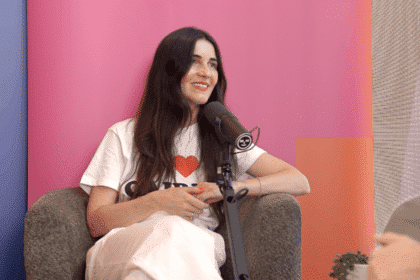Television ratings are trade media’s bread and butter, but understanding what they mean is a whole other dish.
So, here at B&T, we sat down with Gareth Tomlin (main image), the general manager of data, insights and analytics at Paramount ANZ, and he spilt the tea on how it all works and what networks want from their television ratings.
Firstly, Tomlin clearly states that he stands by the current system of measuring ratings. He explained: “You’ve got the television ratings viewing which comes from a panel of 8000 houses across the country.
“If you think of a political poll that could predict election outcomes, it is usually 1000 people at once. So television ratings are one of the most measured markets in the world per capita.”
Now, here’s a bigger question: Has demographics become more important to television networks than total people? Or is it just a line networks use after they’ve lost their total people? Well, Tomlin is following the money and it’s all about demos.
He said: “10 has always been the demo network. Back when it was The Simpsons and Australian Idol, we were the 16-39 network. Now, we focus more on the 25-54s, but that has always been our position. Total people is great, but advertisers buy demographics, and in particular, they buy 25-54s.
“The total people number that comes out every morning is important but what we care more about and what we make money off and that is demographics. Channel Nine has shifted to focus more on demos and Seven has followed suit, mainly because they saw the value in it.”
And what about BVOD? It’s become something; frankly, networks can’t shut up about, but how powerful is it? Tomlin, whose job is all about data, naturally sees it as an incredibly revealing tool, “In some key demos, BVOD overall adds over 30 sometimes 40 per cent.
“BVOD is still only a portion of television these days, About 10 or 11 per cent of total tv viewing. But in key demos, it can be closer to sometimes 20 per cent.” Tomlin is saying that BVOD gives television shows a chance to find a whole new audience and can also help shows grab more of the key viewers they are after, which keeps advertisers happy and spending.
So, if BVOD is crucial to revealing the total reach of a show, should we change how we report on television ratings, get rid of daily recaps, and focus on weekly? Tomlin, interestingly, doesn’t think so, “It has to be reported, but it’s important to break out the two numbers alongside each other. Advertisers are increasingly buying things together, so you are buying the combined TV and BVOD audience, but they are all still buying separately.”
Finally, what numbers realistically these days tell us what is a hit show? Tomlin said: “Everyone has an emotional attachment to one million viewers, but there are hidden numbers we don’t publicise as well.
“A show like Masked Singer that got to a million viewers last year and I’m A Celebrity can pull those numbers, but you have to wait seven days for BVOD.
“MAFS was obviously doing a million a night in the metro, and it shows the potential for all shows at the top of their cycle. But I think 500,000 for overnight sets you up well as a hit show.”
And if a show pulls less, is that the kiss of death? In his response, Tomlin is pragmatic: “We’ve had shows do lower numbers like 300,000, but we waited for the total audience, and then you’re talking about 500,000 viewers.
‘300,000 a night isn’t a death knell for that show. Sponsors buy reach across the entire programme. So it depends on the ultimate reach across the 12-week cycle.”
And what show is Tomlin devoted to? “I’m a big fan of Sandra Sully’s 10 News First.”








